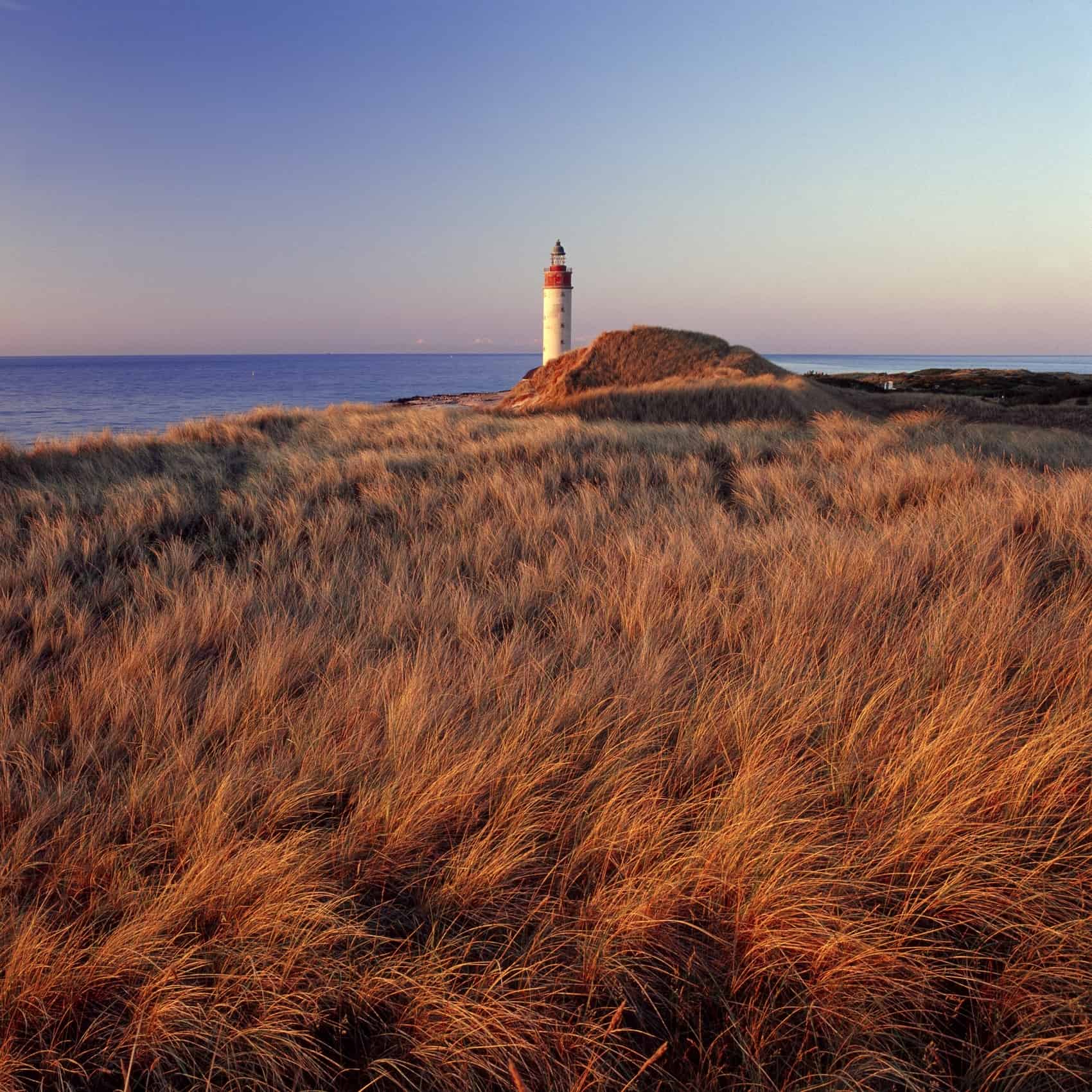Inhalt dieses Beitrages
Anholt – Gran Canaria of the north
Golden brown sand as far as the eye can see. The surface of the seemingly endless ridges of the dunes is sanded by the wind, the sun shines from a flawless blue sky and explodes on the surface of the sea to form millions of twinkling stars. Even palm trees and camels would hardly surprise anyone here in an exotic desert landscape about 50 kilometers from the inhabited mainland, part of the Danish Kattegat island of Anholt. The 22 square kilometer island owes its name “Anholt” to Dutch seafarers who stopped here on their sea routes in the 16th century.
Anholt can be reached by ferry
There is a lot of hustle and bustle in the port of the Jutland port city of Grenaa. Cars are taboo for holidaymakers on Anholt. That is why all passengers try to reload their suitcases, cool bags and fishing rods in the luggage trolleys provided. With a somewhat hoarse horn, the ferry to Anholt sets sail and sets course for Greena. Now your holiday home holiday on Anholt can begin. (Ferry to Anholt from Greena: http://www.anholtfergen.dk/ )
The ferry route starts from the Danish mainland into Kategat.
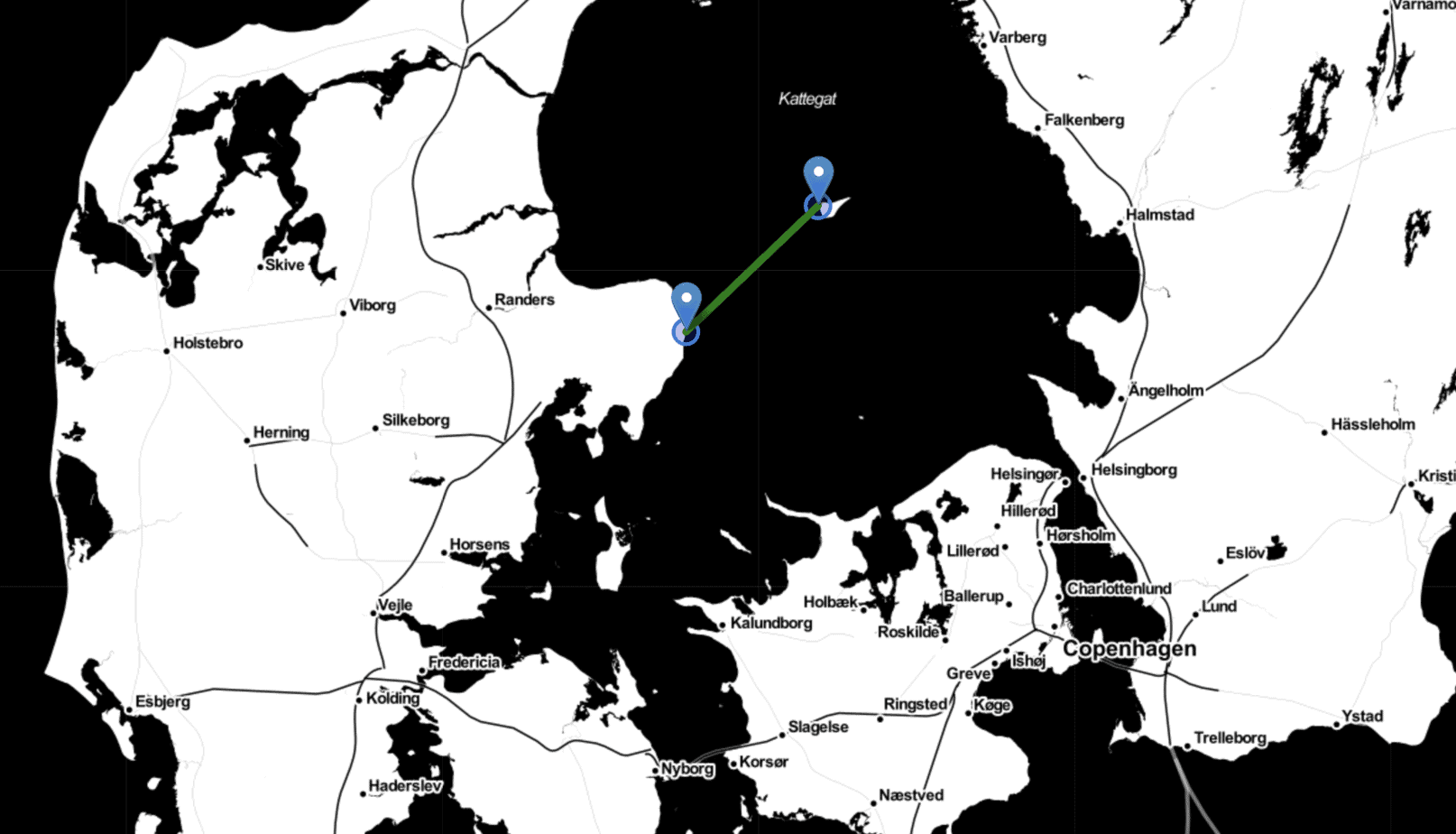
Here starts the ferry of the in Greena. On the map you can see well how easy it is to find the right port basin. You can be quite relaxed about it.
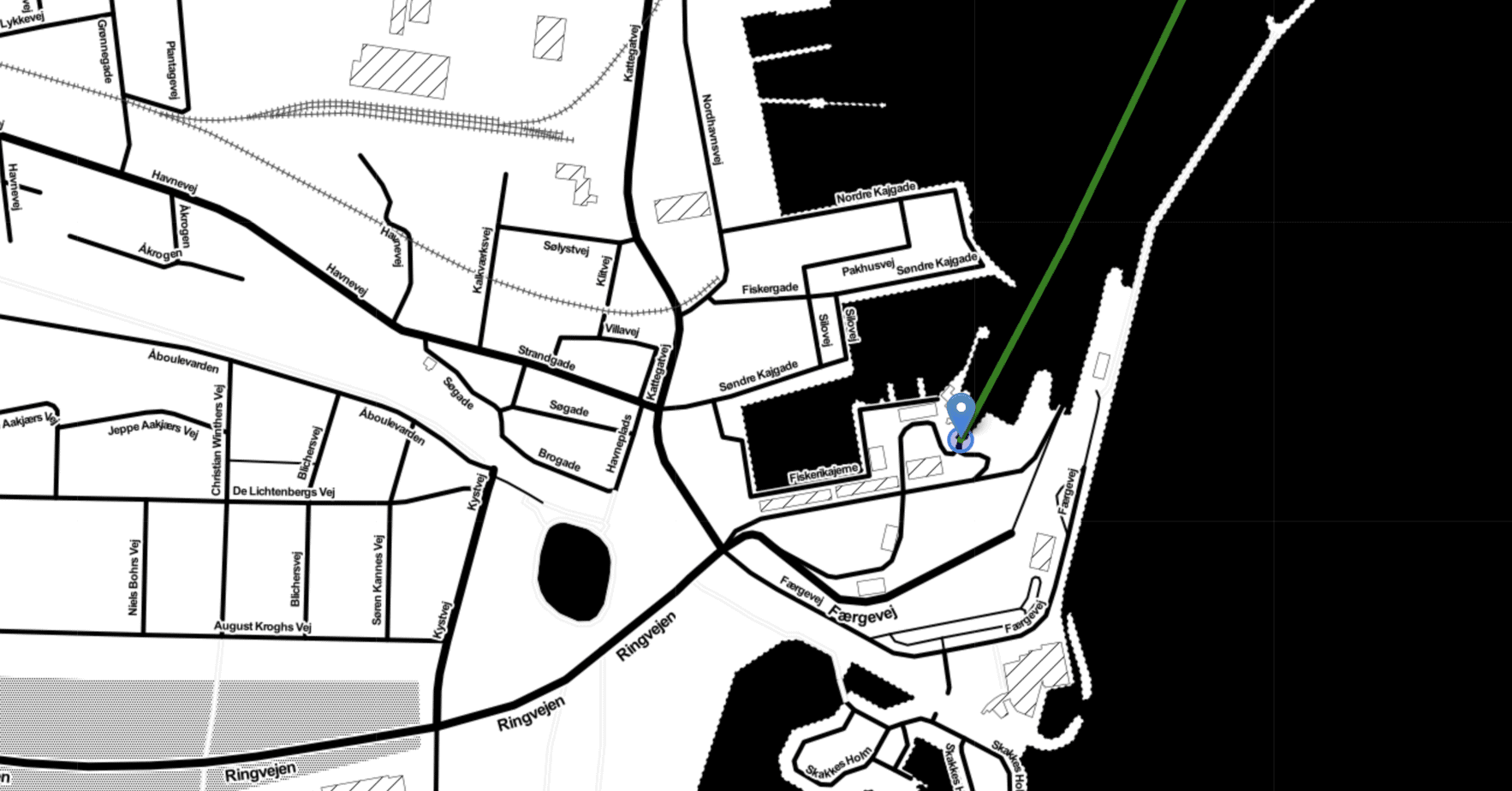
Here the ferry docks after the crossing.
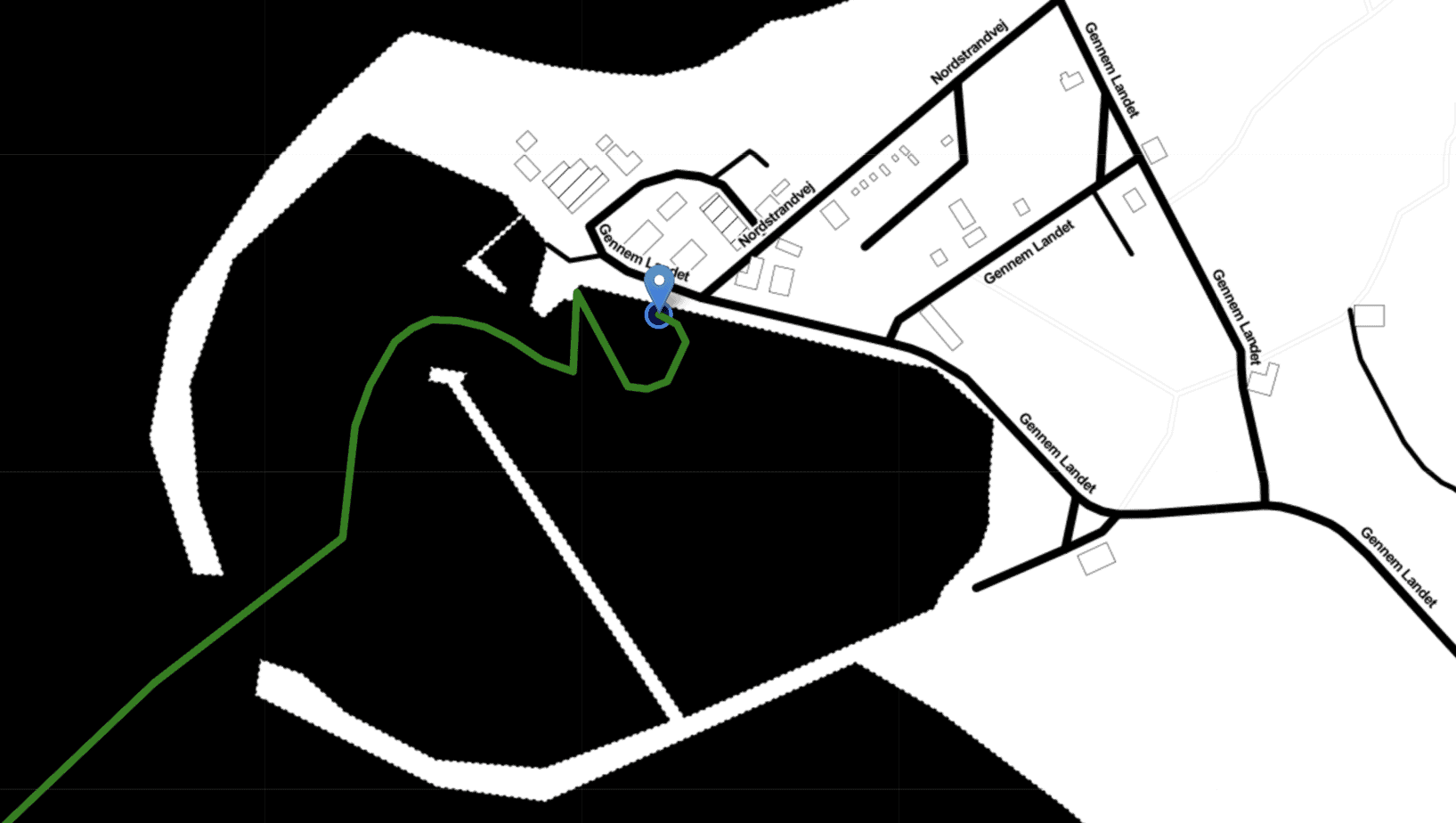
Map of Anholt
In the summer months, the seven-person crew sets out every day, the rest of the year the ship operates four times a week. Not only the yearly benefit from the regular ferry connection
about 60,000 island guests. For the approximately 150 permanent residents of the island, it is an indispensable lifeline, without which life on Anholt would not be possible. Whether newspaper, beer, bread or electrical equipment – almost all goods have to be brought over from the mainland.
Great video about Anholt
No wonder that the arrival of the ferry in the port, which was built in 1902, always attracts lively attention. Family members returning home are welcomed, freight is cleared, and holiday guests collect their luggage. Anyone who is not picked up by one of the 45 cars registered on the island or who organizes a sturdy bike at Cykeludlejning directly at the ferry terminal can use the island taxi. Regardless of which of the two routes to the town, which is about three kilometers away, the drivers decide, there is nothing more than this six kilometers of paved road on the island. Even the island airport can only be reached via a gravel road. Quiet returns to the harbor. The numerous leisure time captains are among themselves again. Your sailing yachts have replaced the fishing boats that used to operate here.
The ferry stays on the island at night, says Agnethe Nørgaard, head of local tourist information. This is an indispensable expression of the vital importance of the ferry connection for the inhabitants of one of the most remote places in Denmark. Islands like Anholt are fighting for each of their inhabitants, striving for attractive jobs and maintaining regular shipping connections to the mainland. It works better together.
As a result, on March 23, 1974, 16 small islands joined together to form Samslutning af Danske. The now 27 member islands include island dwarfs like Birkholm (9 inhabitants) or Hjortø (14 inhabitants) as well as islands like Orø, the most populous island in the association with 989 inhabitants. To become a member, an island must have a ferry connection to the mainland, can accommodate a maximum of 1,000 residents and must not be an independent municipality.
According to Vibeke Fenger, tourists can contribute to maintaining ferry connections (and jobs) as additional passengers. And the success of her work seems to prove her right. Since February 1998 she has headed the office of Netvärket Dansk Sm Turisme on the Limfjord island of Venø. Your central office is the tourist agency of the island alliance and acts as a contact point for interested parties and a booking center for holidaymakers. The offer ranges from mere accommodation brokerage through group arrangements to island hopping by bike and ferry. Each of the islands has its very own character, â € says Vibeke Fenger. But they all offer something that has become rare in our world: peace and quiet, water and nature.
Reasons to take a vacation at Anholt
on Anholt Up to 4,000 guests cavort in the summer months. They all come because of the island feeling. The ice age, wind and water have shaped an unmistakable landscape over the millennia. In the west, the glaciers have left behind a huge wall of earth and rock. Today, fairytale pine and juniper forests cover this range of hills.
Anholt By, the only place on the island, crouches in the eastern lee of the ridge. Church, grocery store, post office, cafe, kiosk and a kro ensure supplies for islanders and holidaymakers. For the duration of the summer months, a police officer is also assigned from the mainland to patrol the island.
From the village you go high up on narrow, marked hiking trails. The highest point on the island, Sønderbjerg, is an impressive 48 meters. The view to the east explains why many Danes often speak fondly of the Gran Canaria of the north: a breathtaking mosaic of sand in a wide variety of yellow and brown tones, green juniper bushes, often bizarre shaped by the wind, large swabs of crowberries and willows that grow only ankle-high.
Extensive sandy beach forms the transition to the turquoise and dark blue shimmering water. A multitude of rare plant and bird species inhabit this unique natural area. The desert is what the people of Anholter call this part of the island, which makes up three quarters of the total area.
The settlement and history of Anholt
Until the middle of the 15th century, the desert was also covered with trees. As a result, almost the entire tree population was sacrificed for the safety of shipping. By order of the Danish King Friedrich II, a pan fire, the historical forerunner of the lighthouse built in 1881, was set up on the eastern tip in 1560. A short time later, technical improvements made it possible to align the fire with the wind. This so-called parrot fire was replaced in 1623 by a wooden stand and the fuel wood was replaced by coal.
Only at the end of the 19th century did the islanders begin to laboriously reforest the eroded areas. Barren soil, wind and sand drift are the main reasons for the very slow growth of the plants. However, lessons have been learned from past mistakes. Today a large part of the island is under nature protection.
The island of Anholt is a small Danish island in the Kattegat, halfway between Jutland and Sweden. The island has an area of 44.5 km2 and 479 inhabitants (as of January 1, 2020). It is administered as part of Norddjurs municipality in the Midtjylland region.
The island is separated from Fyn in the south by the Strait of Anholt. North of Anholt lies the Anholt archipelago, which also includes the small island of Hjelm. The island of Anholt has been inhabited since the Stone Age.
In the Middle Ages, Anholt was an important stopover for pilgrims traveling from Scandinavia to Rome. In the 16th century Anholt was conquered by the troops of Frederick II and remained under Danish control until 1807, when it was ceded to England as part of the Peace of Kiel.
In 1814 Anholt was returned to Denmark and has been part of the Kingdom of Denmark ever since. Anholt is a popular tourist destination and is also home to a unique species of spider, the Anholt spider.
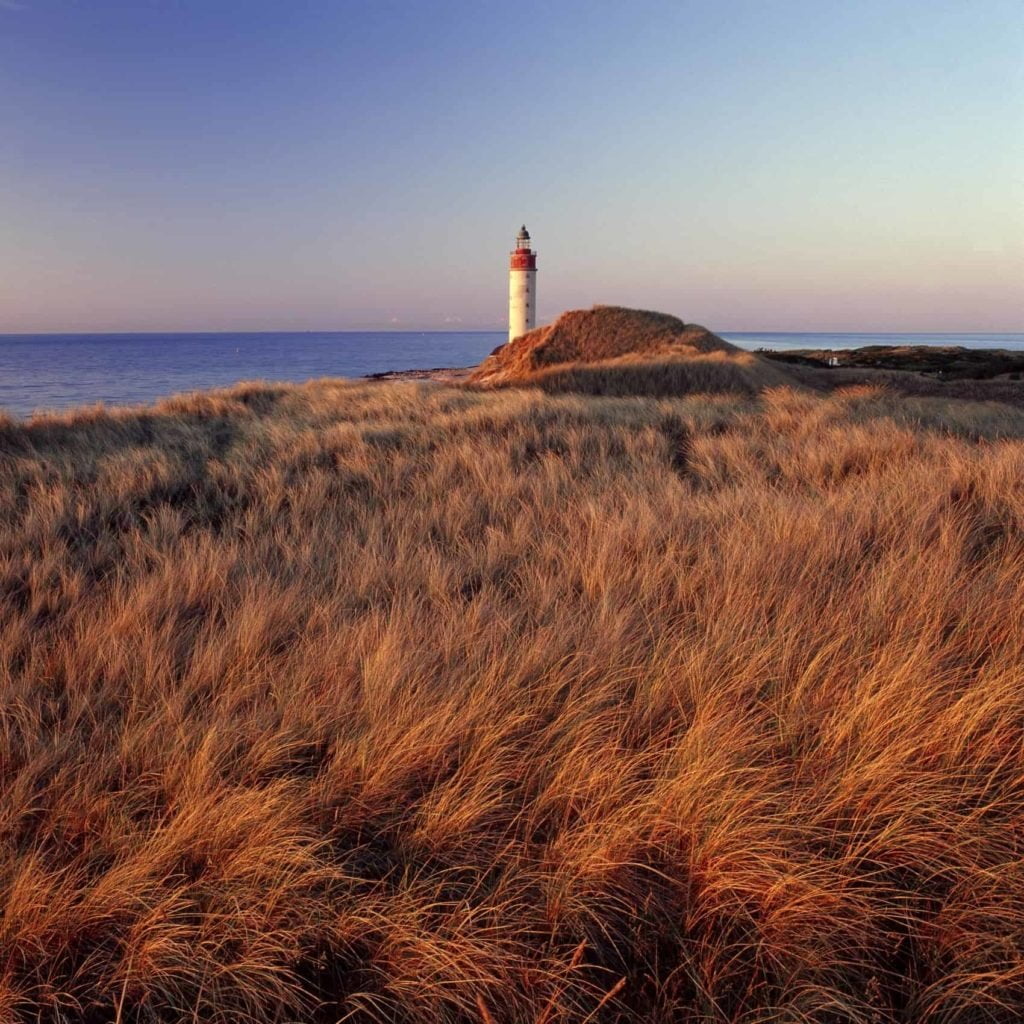
Hike on Anholt
The hike from the village through the desert to the Anholt Fyrâ lighthouse, ten kilometers to the east, is like an expedition into another world and undoubtedly marks the highlight of an Anholt vacation. Far away from the hustle and bustle of everyday life, the island’s guests quickly lose sight of each other here, even in summer. The screaming of the seagulls and oystercatchers, the rustling of the dune grasses, the rustling of the sea suddenly obscure sand ridges up to 20 meters high. Anholt a place of imagination that apparently also let the former islanders wander into the distance at the sight of it, at least in their minds.
East of the lighthouse on the tip of the island is Tottenö, the year-round protected habitat of several hundred seals. A good pair of binoculars and enough provisions should not be missing on this excursion. The curiosity of the seals
but is often hardly less than that of humans, and so seals are not uncommon along the 26 km long sandy beach.
The first traces of human settlement go back to the Stone Age. At the time of the Vikings, pirates are said to have sought protection on the island, later King Valdemar maintained a hunting lodge there. In 1658 a beer mug sealed Anholt’s stay in the Danish kingdom. The Roskilde peace agreement forced Denmark to cede large areas to Sweden. The negotiators only missed the small Danish outpost in the Kattegat with a glass of beer, placed on the map by a Danish envoy â € œincidentallyâ €.
Your past is important to the people from Anholtern and offers the interested visitor surprising insights into the history of their holiday island. The Anholt Local History Association has lovingly arranged a small exhibition of numerous photos, maps, tools, documents, household items and, since 1995, the old lifeboat in the former doctor’s practice. The presented portraits of typical Anholter tell of the tough island life, often full of privation.
Even today, the residents of Anholt and those of the many other small islands are constantly faced with major challenges. The Samsluttning af Danske merger, supported by the Danish state, was an important step towards a common future.
Dusk is slowly falling over the place. The crate of beer is quickly lashed to the bike, and then the last customers of the island shop disappear in the direction of their holiday home. That will happen in the garden of the village cafe
Dinner served. The dried fish lined up in garlands on clotheslines in the front gardens trembles gently in the wind. Calm spreads. The day ends peacefully in front of the crackling open fire. Suddenly exotic figures seem to emerge from the dancing flames. A fantastic end to an unforgettable day on Anholt, the island with the largest desert in Northern Europe.
Author: Yörn Kreib
Camping on Anholt
The campsite on the uninhabited Danish island of Anholt is located about five to ten minutes from the harbor on Nordstrandvej. It is located between the beach and the road and you can choose whether you prefer to camp, explore or explore and explore.
The operators are very nice and helpful, the other campers are families as well as retirees and young people, but why would you want to get in their way? You have respect!
The toilets and showers were always clean and the common room with the sockets was also a room with a pleasant atmosphere.
From the campsite you can walk straight to the beach, if you haven’t already pitched your tent there!
You should allow enough time (several hours, through the desert back through the village takes about 5 hours without a break) to do the hike from the beach to the lighthouse, which is highly recommended because it is absolutely breathtaking.
When you arrive at the campsite on Anholt, you can choose from many different activities. You can go swimming, play badminton or ride a bike. There are also designated areas for hunting, fishing and camping. If you are looking for a nice family vacation, Camping Anholt is the perfect place for you!
On foot you can reach the place quickly via Nordbjerg and Kærladstien (Nordstrandvej further away from the harbor, which is then signposted), and by bike we recommend Nordstrandvej, Rükweg over the harbor, because otherwise you have a steep climb at the harbor ahead of you.
Holiday homes on Anholt (Grena and Grena Strand)
We have put together holiday homes on Anholt for you that leave nothing to be desired. It is best to book your holiday home on Anholt today, because the choice, especially in summer, is quite limited.
However, you should think about how you pitch the tent, because the wind can be quite strong and the pegs may not work.
Netvörket Dansk Turisme, Vibeke Fenger, Riisvej 11, Venø, DK-7600 Struer, Tel. 0045-70 20 73 73; Fax 0045-70 20 73 05, vf@danske-smaaoer.dk, www.oeturisme. dk. A catalog with current offers (â € œVelkommen til de danske smà ¥ øerâ € œ) can be obtained from there (only in Danish). In order to be more up-to-date and to work more cost-effectively, the website has since been expanded considerably. Numerous offers are now also presented there in German, English, Swedish and Norwegian.
Anholt Turistbureau, Östervej 12, DK-8592 Anholt, Tel. 0045-86319133, fax 0045-86319207, turist@anholt.dk, www.anholt.dk. Information, brochures about holidays on Anholt as well as accommodation and ferry bookings. There is no holiday home catalog, but specific holiday home offers will be sent on request. In addition to the 330 or so holiday homes, there is a campsite (near the port) and bed & breakfast (in town). There is a bicycle rental shop (Cykeludlejning) right at the ferry terminal. Reservations by phone 0045-86319200. There is neither a bank nor an EC machine on Anholt.
Anholt Museum, Ageren 3, DK 8592 Anholt. Opening times in mid-June – mid-August from Monday to Friday 10 am – 12 noon and 4 pm – 6 pm, Saturday and Sunday from 4 pm – 6 pm. Outside this time, a notice on the museum door informs about the opening times. Admission for adults 10 kroner, children (4 – 12 years) 5 kroner.
Arrival by train or car to Grenaa. A limited number of free but unguarded parking spaces are available at the ferry terminal. On request, a city map of Grenaa and information about guarded but chargeable parking facilities are available. Grenaa Turistbureau, Torvet 1, DK-8500 Grenaa, Tel. 0045-87581200, Fax 0045-87581212, grenaa@destinationdjursland.dk, www.visitdjursland.com.
We recommend a visit (especially with children) to the Kattegatcenter (sea aquarium with various types of sharks) in the immediate vicinity of the ferry terminal. Opening times daily from 10 am to 4 pm (mid-June to end of August: 10 am to 6 pm) – inquire about current opening times outside the summer season in advance. Price for adults 100 kroner, children (3-11 years) 55 kroner. Address: Færgevej 4, DK-8500 Grenaa, Tel. 0045-86325200, Fax 0045-86327200, www.kattegatcentret.dk.
Ferry from Grenaa. It is not possible to take a car with you. Day trips to Anholt are also impossible. Almost without exception, the timetable only offers one round trip per day. Departure from Anholt 8 a.m., departure Grenaa 12 or 1.30 p.m. Travel time 2 hours 45 minutes (inquire about current deviations in advance). Reservation is required all year round. Price (both ways): adult 310 kroner, child (3 – 12 years) 160 kroner, bicycle 150 kroner. Timetable information and reservations at I / S Grenaa – Anholt Færgefart, Stenaterminalen, DK-8500 Grenaa, Tel. 0045-86323600, fax 0045-86320118, grenaa@anholtfergen.dk, www.anholt.dk.
There are flights from Roskilde several times a week in the main season. Price for adults from 1,340 kroner, children (2-10 years) from 740 kroner. The flight time is about 35 minutes. Timetables & reservations at Copenhagen Airtaxi, Københavns Lufthavn Roskilde, DK-4000 Roskilde, Tel. 0045-46191114, fax 0045-46191115, cat@aircat.dk, www.aircat.dk.
1 crown = 0.135 euros, 1 euro = 7.4 crowns.
Link tip:
Article about Herbst auf Anholt in the ARD from 03.12.2017
[ratings]
